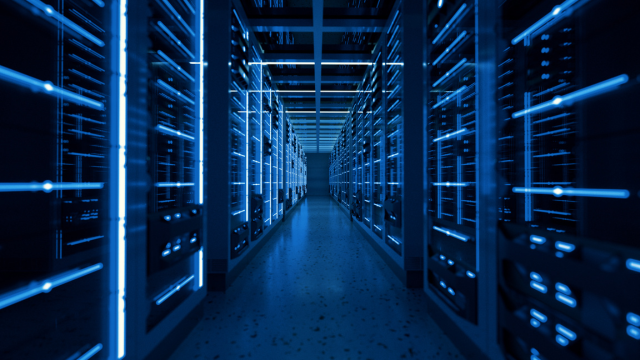
The Importance of Redundancies in Your Infrastructure
In December 2017, an electrical fire knocked out power at Atlanta’s Hartsfield-Jackson International Airport.
The outage forced the FAA to issue a ground stop for hours in Atlanta, canceling thousands of flights and stranding thousands of passengers at the world’s busiest airport. The power came back on after about 11 hours, but it took days for the airport to return to normal operations.
The outage created a financial ripple effect, impacting the airport, airlines and travelers. Delta Air Lines uses Atlanta as its major hub and reported the outage cost the company up to $50 million.
Just imagine if something like this happened in your data center or to your network.
Why Your Environment Needs Redundancies
This scenario illustrates why it’s so important to have built-in redundancies in your environment.
Redundancies work by placing multiple channels of power or communication within your infrastructure and network. Think of your redundancies as insurance against failures. If you have multiple paths of connection, the loss of a single path would be inconsequential because your connection would be switched to another source.
To be fair, Hartsfield-Jackson International Airport did have a redundant power system in place. Unfortunately, the fire was so intense that it damaged the two substations providing power to the airport, including the backup system.
When you consider the financial, technical and PR damage caused by unplanned outages, it’s almost a no-brainer to include redundancies in your footprint.
Physical Redundancies
The first level of systems you need to consider is physical-level redundancies which back up your utilities, such as power and water. Adding these redundant systems will help eliminate single points of failure in your environment.
If there is an unplanned disruption or scheduled maintenance, these secondary components will automatically take control, keeping your servers and applications online. A setup like this is necessary for your critical applications. (Shameless plug: HorizonIQ’s Tier 3-type data centers include N+1 concurrently maintainable design.)
Network Redundancies
A network-level redundancy involves the use of both redundant links as well as network equipment, such as routers and switches. The concept is similar to a physical-level redundancy – should your main communication path go down, your servers can use your backup links to maintain availability and keep your business online.
In layman’s terms, consider your network redundancy like directions you’d get from your car’s GPS. If you are driving down the highway and there is an accident, your navigation system will divert you to a route that’s less crowded. It may not be the shortest route in distance, but it ends up being the quickest to your destination.
Of course, your network-level redundancy won’t have unlimited paths from which to choose like your car GPS. It will only work with paths that you’ve already established as your backups.
Facility Redundancies
Even with the best redundancy plans, there are always situations that are out of your control. Whether it be a man-made incident or natural disaster, there are certain instances in which an entire data center (or even city) could go offline. To keep your business up and running should the unthinkable happen, it’s important to consider facility redundancies.
Facility redundancies are very similar to disaster recovery solutions, but rather than having your backup site on standby for failover, you are normally running off servers in both locations. For instance, if you have a footprint in Atlanta and Dallas, you would set up your environment so it is equipped to handle your entire infrastructure should something happen in one of those sites. (Shameless plug #2: HorizonIQ has 51 data centers in 21 metropolitan markets around the world that you could utilize for your footprint.)
Implementing Your Redundancies
Implementing redundancies within a network or infrastructure is more than simply duplicating all your connections. Redundancies are necessary for maintaining availability, but when used in excess, they can be a drain on overall speed and performance.
It can be possible for a network to be overbuilt. When implementing redundancies, the key is to create backup paths built for efficiency, speed and availability. This means having a clear design that considers current failing paths and builds redundancies to fit exact pain points.
Remember, every IT network is unique. It’s important to be acquainted with your network’s strengths and weaknesses. Assess where your business’s connections terminate and where your resources are most available.
The best way to ensure you’re doing it right is leaving the strategy and setup to the experts. Our team has experience providing the best possible networking and infrastructure services for some of the most successful businesses in the world. HorizonIQs’s concurrently maintainable data centers are designed with built-in redundancies, so your network and servers will remain online even if there’s a disruption. Contact us today to learn about how we can provide a footprint for your infrastructure that’s always online, so you can focus on your core business.



